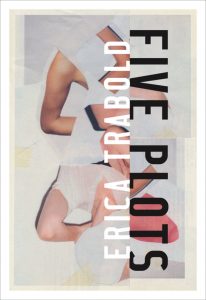“Five Plots”, the fifth and final chapter of Trabold’s book of the same name, is split into five additional sections titled 1 through 5. Although I think I should’ve known better by now, I expected the fourth and fifth chapters of the book to tie back into the earlier chapters more than they did. Instead, they continued to tell new stories, unrelated to the preceding ones except through their relation to the author and the land. Even though it’s not what I expected, the book is successful in its ability to tell different stories, each at varying levels of completion, without making any obvious connections between them all.
The final chapter begins like this: “I am going to have to start at the other end by telling you this: I am close to my death. My grave has been plotted and paid for by my father. He told me about the purchase at some family gathering—perhaps it was Christmas, or Thanksgiving, or the Saturday we finally decided to put down the family cat.” Trabold does not explain her closeness to death, unless the answer is that she is physically close to it whenever she visits the place she grew up, where the grave resides. She later hints at a physical subluxation, something she’s had since childhood, but there is nothing to suggest it is fatal. She leaves the story of a misalignment largely untold, as well.
An interesting effect of introducing so many tales, even without finishing them, is that the reader begins to feel like she truly knows the author. By excluding the reader from the fully explained versions, Trabold highlights only what is most important in each story. Even if I don’t know what I’m missing, I know that what I’m getting is what Trabold found most impactful. That, in itself, can be very telling.
I’ve realized that I cannot create the kind of large, complex metaphors that lyric essayists, Trabold included, often use in their writing. It’s part of the reason I don’t write fiction anymore. My imagination is limited, and I have trouble writing about things that I have to make up. Utilizing partial storytelling helps me work around this. One definition of a lyric essay suggests that it “pays the reader a compliment by dint of understatement.” The whole story doesn’t need to be explained; you can trust the reader to put the pieces together. With any luck, this is what I hope to emulate in my own writing.